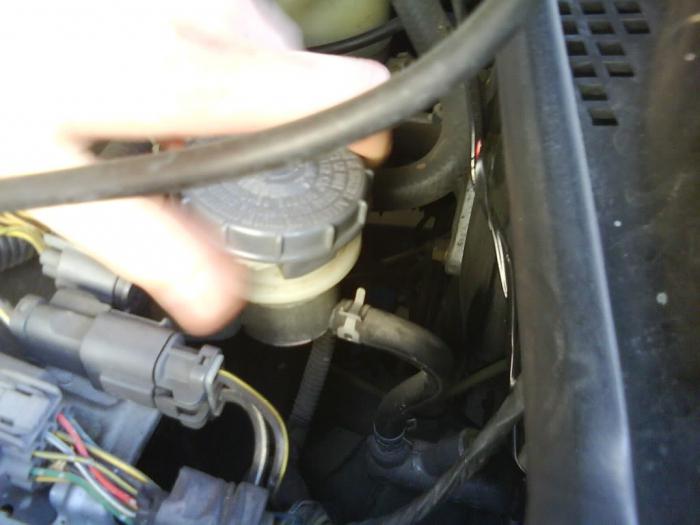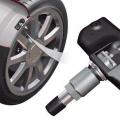The clutch master cylinder is required in order to transfer the force from the pedal to the fork and release bearing. In total, the mechanism has two cylinders: a working one and a main one. They are connected by a metal tube, on the lower edge of which a short rubber hose is installed. Frequent cylinder breakage is the formation of a leak. Why does it arise and how can it be eliminated? To answer these questions, you need to know the structure of the mechanism and the principle of its operation.
Purpose of the clutch cylinder
There are two types of power transmission to the release bearing mounted around the input shaft. The first is with a cable, today it is used on most of the budget car models. The second is hydraulic, used in more expensive cars, as well as in the VAZ 2101-2107 family. Despite the fact that these models were once popular, their cost increased precisely due to the use of this type of transmission. Not much, but if you look at the entire structure of the car, you can find many unprofitable components. And the price of the clutch master cylinder in stores turns out to be higher than the cost of the cable. For example, a cable for a VAZ-2110 will cost 200-250 rubles. And the main cylinder has a cost of 390-450 rubles, depending on the manufacturer.
![]()
The piston in the cylinder moves compressing the fluid when the clutch is released with the pedal. Pressure is generated in the system, which forces the piston of the slave cylinder to extend, pushing the fork, which moves the release bearing along the axis of the input shaft. As a result, the disc moves away from the basket and the torque is not transmitted to the gearbox, the clutch is disengaged. When the driver throws the pedal, the rod of the working cylinder returns to its original position under the action of the spring, the liquid is displaced to the main one and enters the expansion tank.
Basic structural elements
The body of the VAZ clutch master cylinder, for example, is one-piece. Inside there is a hole in which the piston moves. It is made of metal and has rubber rings. They serve to seal so that the brake fluid poured into the system does not get out. An all-metal rod, connected to one side of the pedal, is used to drive the piston.

There are three holes on the top of the case. One is equipped with an adapter for attaching a rubber hose, which connects the cylinder to the expansion tank. A metal tube is screwed into the second hole. It serves to transfer pressure to the side of the working cylinder. And the third hole is necessary to install the fitting used for bleeding the system.
Replacing tubing and hoses
These elements are replaced in case of their complete or partial destruction. Signs of this phenomenon for a metal tube are the presence of mechanical damage, chips, the presence of corrosion due to the effect of an aggressive environment (for example, electrolyte ingress). It is also necessary to replace the tube when the edges of the fittings located at its ends are destroyed. Rubber hoses can dry out under the influence of water, high temperature and humidity. Cracks appear through which the brake fluid escapes.

You will need a special crimp wrench to replace the tubing and hose. With its help, it is necessary to rip off the ends of the tube from the thread. These elements are made of aluminum alloys, so they are too soft, when using open-end wrenches, the destruction of the edges is guaranteed. First you need to drain all the brake fluid, for this use the bleed fittings located on both cylinders. Then unscrew the tube tips and hose. It is imperative to replace copper washers. After you fill in fresh brake fluid, you need to bleed the system so that there are no air congestions in it.
Replacing the master cylinder
Replacing the GAZ clutch master cylinder, as in the Lada, is not very difficult. It is sometimes unreasonable to carry out repairs, since the quality of a new unit is much higher than that of a restored one. You just need to adhere to a certain sequence of actions. Do everything that was indicated in the previous paragraph: drain the liquid from the system, unscrew the tube from the cylinder.

In addition, you will need to disconnect the expansion tank. On some foreign cars, it is installed directly on the cylinder. In the classic VAZ line - on the body, the connection to the cylinder is by means of a rubber hose. The body is fastened with two nuts. They are screwed onto studs coming out of the body. It is necessary to unscrew these nuts, and then freely remove the main cylinder housing.
Replacing the slave cylinder
In this case, the work is a little more difficult, since you will have to get under the car. Convenient to repair using a pit or overpass. But if you are skinny and you have long arms, all actions can be quickly carried out from above. Access, however, is a little difficult, but a little nimbleness and the task will be solved. The working cylinder is fastened with two studs. When disassembling, do not lose the metal plate to which the spring is attached. After removal, you can use the clutch master cylinder repair kit, but it is better to install the whole new unit.

Basically, the job is as simple as replacing the master cylinder. The actions must be performed the same. The main thing is not to forget to drain the brake fluid. If it has already served a lot, then after the repair it is recommended to fill it with fresh one. With prolonged operation, the properties of the liquid are lost, useful additives volatilize, which is why it can even destroy the metal. Try to replace it about every two years. A similar requirement for the brake system, if the mileage per year is within 25-30 thousand km. If more, then the fluid should be changed annually.
System bleeding
So all the cylinders, tubes and hose have been replaced. It is possible that you purchased a clutch master cylinder repair kit, installed its elements on all structural parts. Now all that remains is to fill in fresh brake fluid - and you can safely drive the car. Immediately stock up on a piece of silicone transparent tubing. It will be useful for you to control the quality of the liquid. A special wrench and open-end for 8, a small jar of brake fluid - that's the whole tool, only an assistant will not interfere. The degree of his qualifications is not very important, since you only have to squeeze the pedal.

You put your partner behind the wheel, squeeze out the handbrake, and, to be sure, also set the car to speed. Climb under the bottom so that it is convenient to loosen the bleed fitting. Just remember to fill the expansion tank with liquid before doing this. The partner makes several strokes with the pedal, fixes it in the pressed position. At this time, you loosen the fitting with a hose put on it, the other end of which is lowered into a jar of brake fluid. When a little air comes out, you twist the union, the partner repeats his actions: he makes a few more strokes with the pedal. And so on until the air stops flowing.
Conclusion
You can do without an assistant when pumping, but then you have to sacrifice a small amount of brake fluid. In general, all the procedures to which the clutch master cylinder 2106 undergoes are similar to those actions that are necessary for the repair and maintenance of the brake system. The essence is practically the same, only in the latter there is not one circuit for the movement of fluid, but four.




